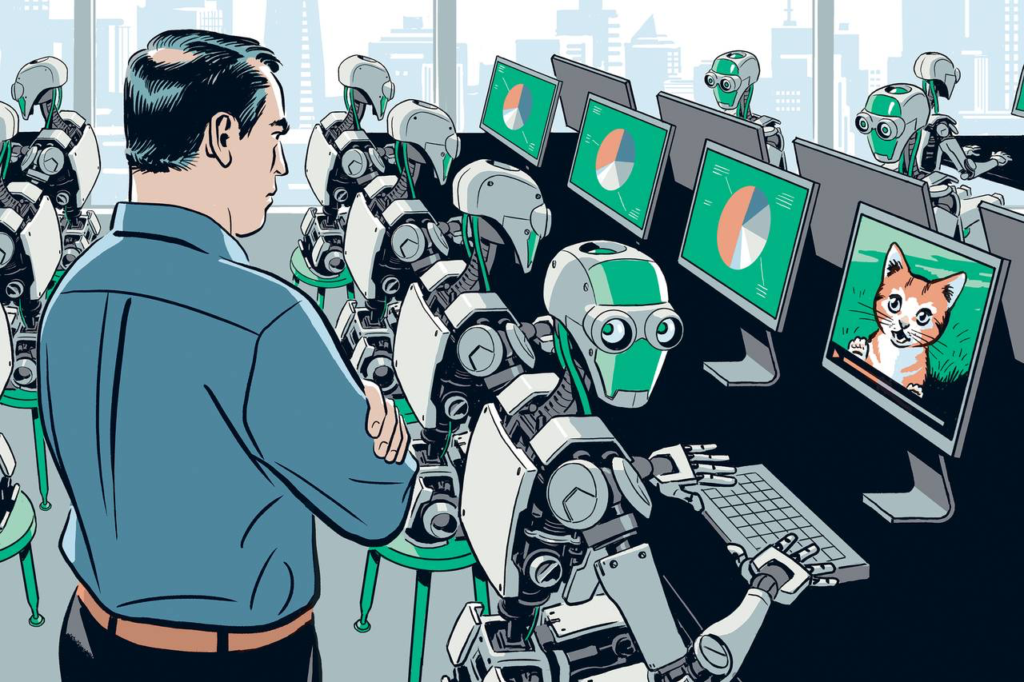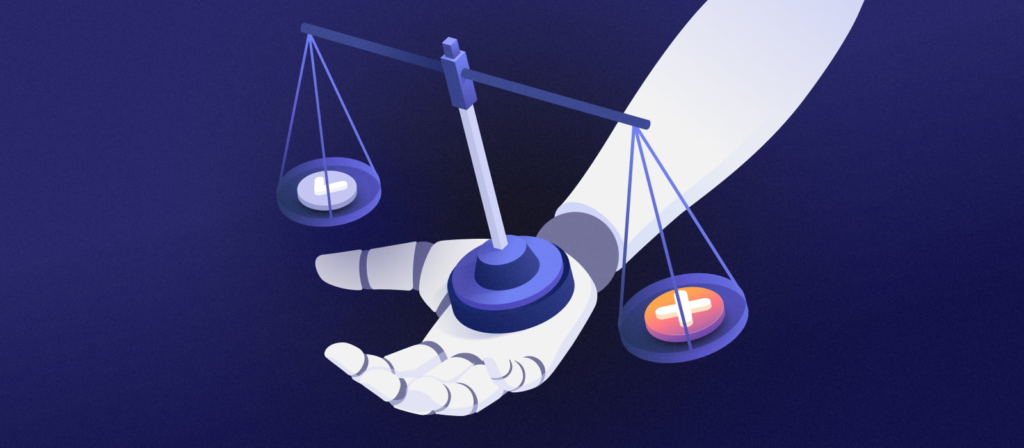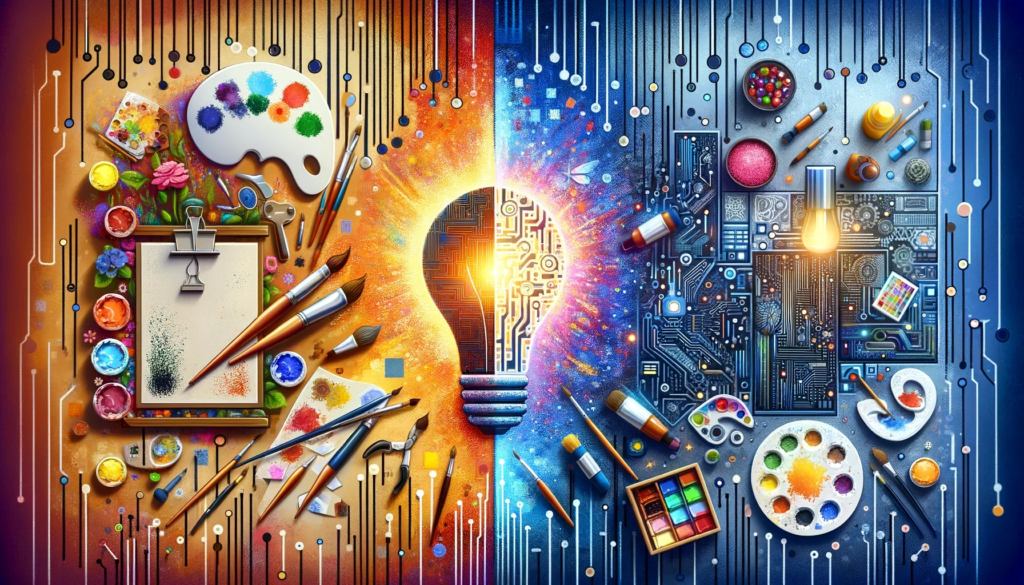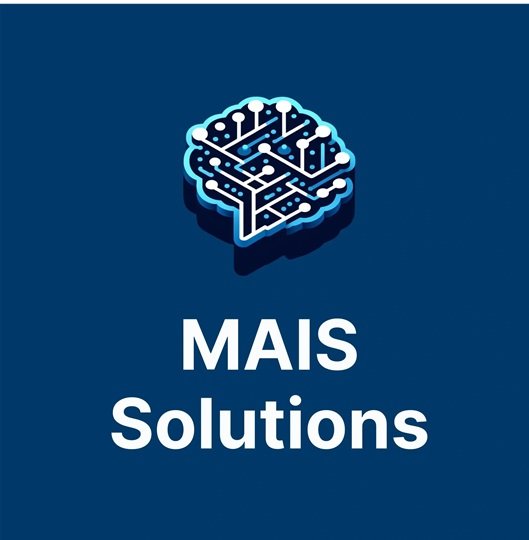Your cart is currently empty!
AI and Human Creativity
Back to: MAIS AI Essentials
Redefining Creativity in the AI Era
What is Creativity?
Creativity has long been seen as a uniquely human trait—the ability to generate ideas, solve problems in unexpected ways, and create works of art that express emotion and imagination. It involves blending logic and intuition, drawing from experience, and often leaping into the unknown. Traditionally, creativity has been thought to require qualities like empathy, individuality, and a deep understanding of context—qualities associated almost exclusively with human cognition. But with the rise of Artificial Intelligence, this traditional view of creativity is being redefined.
How AI Challenges the Definition of Creativity
AI has entered spaces previously dominated by human imagination. Machines can now generate poetry, compose music, and design visually stunning artwork. They analyze patterns, identify trends, and use vast datasets to create outputs that can rival, and sometimes surpass, human-made works. For example, AI tools like Midjourney and DALL-E can produce surreal and intricate visuals, while ChatGPT assists writers in drafting complex narratives or overcoming creative blocks.

However, AI does not create in the human sense. It lacks intuition, emotion, and the ability to draw inspiration from personal experiences. Instead, it generates content based on learned patterns and probabilities derived from data. This raises important questions: Does creativity require intent? Can something be considered creative if it is produced through algorithms and not conscious thought?
While some may view AI as a competitor, it is more accurate to see it as a collaborator. AI provides tools that amplify human creativity rather than replace it. For instance, it can perform repetitive tasks, test variations of ideas, and suggest possibilities that a human might not have considered. In this way, AI broadens the scope of what is possible, enhancing the creative process.
Human-AI Collaboration: A New Creative Frontier
AI is increasingly being used as a partner in creativity, helping humans explore uncharted territory. Artists, musicians, and writers are not being replaced by AI but are using it as a tool to extend their abilities. For instance:
- Writers can use AI to suggest plot twists or improve the flow of dialogue in their stories.
- Artists employ AI to explore new styles or generate drafts that they refine into final works.
- Musicians collaborate with AI to compose melodies or develop harmonies based on their input.
Take the example of musician Taryn Southern, who used AI to co-compose her album “I AM AI.” By providing basic input and parameters, she guided the AI to generate sounds that complemented her vision, blending human artistry with machine-generated creativity.
The Evolution of Creativity in the AI Era
This collaboration between humans and AI is redefining creativity itself. Rather than competing with humans, AI acts as a catalyst, speeding up processes, removing barriers, and opening up new possibilities. Creativity is no longer confined to the limits of one person’s mind but has become a partnership where humans bring intent, context, and emotion, while AI contributes precision, scalability, and novelty.
AI has introduced a new era where creativity is a shared endeavor. It has pushed us to rethink what it means to create and how we can harness the unique strengths of both humans and machines. As we navigate this era, the question is no longer whether AI can be creative, but how humans can use AI to expand the boundaries of imagination.
AI as a Creative Partner
How AI Complements Human Creativity
AI is reshaping how we think about creativity, not as a solo endeavor but as a partnership. While humans bring emotional depth, intent, and cultural understanding, AI offers speed, scalability, and a wealth of data-driven insights. This collaboration is transforming industries like art, music, and storytelling, enabling creators to push their boundaries and explore new forms of expression.
For instance, in the visual arts, AI tools like Midjourney and DALL-E allow artists to experiment with styles and concepts that would take weeks or months to create manually. In music, AI-generated compositions provide starting points that musicians can refine, blending their artistic vision with AI’s pattern-based innovation. Writers, too, are embracing tools like ChatGPT to brainstorm ideas, refine prose, and even co-create entire stories.
Real-World Examples of AI Collaboration
- Art: Digital artist Refik Anadol uses AI to process massive datasets and create immersive, data-driven installations. His works merge technology with storytelling, creating unique visual experiences.
- Music: Holly Herndon, an experimental musician, collaborated with an AI named Spawn to produce groundbreaking tracks that blend human and machine-generated sounds.
- Storytelling: Novelist Robin Sloan has used AI to co-write passages in his books, describing it as a “thought partner” rather than a competitor.
These examples illustrate how AI is not replacing the creator but serving as a tool that expands the creator’s capabilities. Whether it’s testing variations, generating novel ideas, or speeding up tedious tasks, AI acts as a catalyst, enabling artists and innovators to focus on what truly matters: their vision and intent.
Balancing Collaboration and Control
Despite AI’s growing role in creativity, the human touch remains irreplaceable. Creators guide AI by setting parameters, selecting outputs, and refining results. This balance ensures that the final work reflects the creator’s intent and emotional resonance, rather than being purely machine-generated.
The Tools Powering AI Creativity
Revolutionizing the Creative Process with AI Tools
AI creativity tools are revolutionizing the way individuals and organizations approach the creative process. These tools leverage advanced algorithms to generate visuals, music, text, and even full presentations, enabling creators to expand their horizons, experiment with new styles, and bring abstract ideas to life more efficiently than ever before. Whether used by a professional artist, a writer tackling their next novel, or a business crafting a compelling pitch, AI tools are transforming creativity into a dynamic collaboration between humans and machines.
By automating repetitive or time-consuming tasks, AI allows creators to focus on the heart of their work: intent, emotion, and storytelling. These tools act as both assistants and collaborators, bridging the gap between imagination and execution.
Key AI Tools Driving Creativity

- Midjourney: This generative AI platform is a favorite among visual artists, translating textual descriptions into captivating artwork. Artists use Midjourney to explore surreal concepts, prototype ideas, or even create finished pieces. For instance, someone can input “a futuristic city at sunset with floating cars” and instantly receive beautifully rendered interpretations to refine or build upon.
- ChatGPT: OpenAI’s language model serves as a powerful brainstorming and drafting tool for writers. It can help craft compelling dialogue, suggest plot twists, or even refine a piece of technical writing. Writers often describe ChatGPT as a creative companion, one that provides fresh perspectives or simply helps overcome creative blocks.
- DALL-E: A sister tool to ChatGPT, DALL-E specializes in creating high-quality images based on textual prompts. From surreal fantasy landscapes to photorealistic product mockups, DALL-E empowers designers and marketers to rapidly create visuals that align with their vision.
- Gamma: Gamma simplifies the process of creating professional presentations and documents. By automating layout design and visual styling, it allows creators to focus on crafting compelling messages rather than spending hours formatting slides or pages.
- Holly+: Created by musician Holly Herndon, Holly+ allows fans and collaborators to generate music using her voice. This unique tool blurs the line between personal identity and creative expression, showcasing how AI can amplify and extend an artist’s influence.
How These Tools Empower Creators
These tools are democratizing creativity by making advanced capabilities accessible to everyone, regardless of technical expertise. They lower barriers to entry for those without formal training, while also giving seasoned professionals new avenues to experiment and innovate. For example:
- Designers can generate visual concepts or prototypes rapidly, reducing the time needed for brainstorming and revisions.
- Writers facing a creative block can use ChatGPT to explore fresh ideas, test alternative narratives, or develop fully structured drafts.
- Musicians and composers can use AI-generated melodies as starting points, layering them with personal elements to create deeply expressive pieces.
These tools also foster creativity at scale, allowing teams to work more efficiently while maintaining high standards of quality and originality. For businesses, AI tools reduce the time required for content creation, allowing companies to focus on strategy and audience engagement.
The Human Role in AI-Driven Creativity
While AI tools are incredibly powerful, their value lies in how they are used by human creators. The AI might generate countless outputs, but it is the human touch—shaping, curating, and refining—that determines the final product. A writer still decides which story to tell, an artist selects the most resonant image, and a musician adjusts the AI-generated sounds to fit their vision.

This partnership ensures that AI does not overshadow human creativity but instead amplifies it. The tools act as a collaborator, offering suggestions and possibilities that the creator can embrace or adapt. This interplay between machine precision and human intuition leads to outcomes that are both innovative and deeply personal.
AI tools are not just reshaping creativity—they are expanding what is possible. They provide a platform for creators to explore uncharted territory, combining the computational power of AI with the emotional and cultural insights of humans.
Challenges and Ethical Questions
Navigating the Ethical Landscape of AI Creativity
As AI becomes more integrated into the creative process, it brings with it a host of ethical and philosophical challenges. These challenges revolve around questions of authorship, ownership, fairness, and the broader societal impact of automation on creative industries. While AI tools empower creators and democratize access to creativity, they also blur the boundaries between human and machine-generated work, forcing us to reconsider long-held assumptions about what it means to create.
Who Owns AI-Created Work?
One of the most debated questions is ownership. When an AI generates a painting, a piece of music, or even an article, who owns the intellectual property? Is it the person who provided the prompt, the developer who created the AI tool, or the AI itself?
- For example, if an artist uses a platform like Midjourney to create a digital painting, should they be considered the sole author, or does credit also belong to the developers of the platform?
- Current legal frameworks often lack clarity on this issue, leading to disputes and inconsistencies across industries.
Does AI Creativity Devalue Human Effort?
Another pressing concern is the potential devaluation of human creativity. AI can produce work at incredible speed and scale, often at a fraction of the cost of human labor. This has led to fears that industries like graphic design, content creation, and even fine arts could see diminished opportunities for human creators.
- AI-generated stock images, for instance, can replace human illustrators for certain tasks, raising concerns about job displacement.
- However, many argue that AI does not replace the depth and nuance of human creativity but instead opens new avenues for collaboration and innovation.
The Risks of Bias and Homogenization

AI-generated content is only as good as the data it learns from. If an AI model is trained on biased or limited datasets, its outputs may perpetuate stereotypes or fail to represent diverse perspectives.
- For example, AI tools that generate text or visuals might reinforce cultural or gender biases found in their training data.
- Additionally, the overuse of AI tools could lead to a homogenization of creative outputs, with works lacking the individuality and diversity that come from varied human experiences.
The Question of Authenticity
AI creations often mimic human styles and emotions convincingly, but can they ever be truly authentic? Authenticity in art and creativity often stems from personal experiences, emotions, and cultural context—qualities that AI, as a machine, does not possess.
- For instance, while an AI might compose a piece of music inspired by Beethoven, it cannot replicate the lived experiences or emotional struggles that informed Beethoven’s work.
- This raises the philosophical question: Can something created by a machine ever carry the same emotional weight or cultural significance as something created by a person?
Striking a Balance
To navigate these challenges, creators and industries must strike a balance. This involves:
- Establishing clear guidelines for ownership and credit when using AI tools.
- Ensuring diverse and inclusive datasets to minimize bias in AI-generated work.
- Maintaining the human element in creativity, using AI as a complement rather than a replacement.
AI in creativity is not a problem to solve but a tool to wield thoughtfully. As we embrace its potential, we must also confront its challenges with responsibility and care, ensuring that it enhances rather than diminishes the human spirit of creation.
In the next section, we’ll explore how the future of AI and creativity might unfold, focusing on the opportunities and possibilities that lie ahead in this evolving collaboration.
The Future of AI and Creativity

Expanding the Boundaries of Creativity
The future of creativity with AI is not just about automation or augmentation—it’s about breaking barriers and imagining possibilities that were once inconceivable. AI’s ability to process vast amounts of data, simulate countless scenarios, and generate novel ideas will push human creativity into new dimensions. Whether in art, music, writing, or design, AI will act as a co-creator, helping humans explore uncharted territories of innovation and expression.
For instance, immersive technologies powered by AI, such as virtual and augmented reality, will transform storytelling. Imagine stepping into an AI-generated world where every detail—from the texture of the environment to the dynamics of the narrative—is tailored to your personal preferences and reactions in real time.
Industries Poised for Transformation
AI is already shaping the creative processes across industries, and its influence will only grow in the future:
- Film and Gaming: AI will enable creators to generate fully immersive virtual worlds, simulate realistic character behaviors, and optimize production workflows. Personalized gaming experiences, where the story adapts dynamically to player actions, will become mainstream.
- Fashion and Design: AI will collaborate with designers to create clothing lines that respond to trends in real time or even tailor individual garments based on customer preferences and body data.
- Education and Training: AI-powered creativity tools will transform how we learn, making education more interactive and personalized. Imagine AI systems co-creating learning materials, like virtual lab simulations or custom story-based lessons.
The Evolution of Human-AI Collaboration
As AI continues to evolve, the relationship between humans and machines will grow closer, moving from simple tools to seamless creative partnerships. Advanced AI systems will become intuitive collaborators, capable of understanding human intent and offering meaningful contributions without needing constant guidance.
- From Assistant to Collaborator: AI will transition from merely executing commands to co-creating, suggesting alternative approaches, and inspiring innovation in ways that feel almost intuitive.
- Shared Creativity: Future creators might rely on AI not only for execution but also for ideation. Teams of humans and AI systems will collaborate on ambitious projects that blend human emotion with machine precision.
Ethical and Philosophical Implications of the Future
As AI reshapes creativity, it will also challenge societal norms and ethics. Questions of authenticity, ownership, and the emotional impact of art will remain central to the conversation. For example:
- How will audiences perceive art or music created entirely by AI?
- Will the value of human-created works rise as AI becomes more prevalent?
Furthermore, with AI driving more of the creative process, industries will need to find ways to ensure that technology remains accessible and inclusive, preventing monopolization by large corporations.
Opportunities for Creators
The future of AI in creativity is not about competition but collaboration. Creators who embrace AI will find themselves equipped with powerful tools to express their visions, connect with audiences, and innovate in ways that were once unimaginable. These opportunities include:
- Scaling creativity: Reaching larger audiences with AI-powered personalization and distribution.
- Diversifying skill sets: Learning to work with AI systems, making creators more versatile and adaptable.
- Unlocking new genres: Exploring forms of expression that blur the lines between art, technology, and interactivity.
AI will not replace human creativity—it will redefine it, amplifying what makes us unique while challenging us to grow. The future is a canvas, and AI is just another brush in the artist’s hand.
Interactive Reflection: Your Creative Collaboration with AI
Exploring Creativity Through Hands-On Experience
The best way to understand the potential of AI in creativity is to experience it firsthand. In this activity, you will use an AI tool of your choice—such as ChatGPT, Midjourney, or DALL-E—to create something unique. This could be a piece of writing, a visual artwork, a music composition, or even a presentation. The goal is to explore how AI can enhance your creative process and reflect on the collaboration between human intuition and machine-generated ideas.
Instructions for the Activity
- Choose Your AI Tool:
- Use a text-based AI like ChatGPT to write a poem, story, or script.
- Experiment with an image-generation tool like DALL-E or Midjourney to create artwork based on a concept or description.
- Generate a music composition using AI music platforms or explore AI-driven presentations with Gamma.
- Set Your Creative Goal:
- Decide what you want to create. For instance, you might aim to write a short story, generate a futuristic landscape, or design a product prototype.
- Collaborate with AI:
- Provide prompts or parameters to the AI tool. Be as detailed or open-ended as you like to see how the AI interprets your input.
- Allow the AI to generate ideas or outputs, and then refine them to better match your vision.
- Reflect on the Process:
- What did the AI contribute to your creation? Did it spark new ideas or help you overcome creative blocks?
- Which aspects of the work felt uniquely human, and which felt machine-driven?
- How did collaborating with AI change your approach or perspective on creativity?
Example Reflection
Imagine you used ChatGPT to co-write a short story. The AI suggested unexpected twists and helped flesh out dialogue, but you noticed that some of its ideas lacked emotional depth or coherence. By combining the AI’s suggestions with your own intuition and context, you created a narrative richer than either could have achieved alone.
Similarly, if you used DALL-E to generate artwork, you might find that the AI’s output inspired you to explore a color palette or composition you wouldn’t have considered, even though you added the final touches yourself.
Share Your Creation
Consider sharing your work with peers or colleagues to showcase how human-AI collaboration can lead to innovative results. Discuss the experience and exchange ideas about the role of AI in creative industries.
Closing Thoughts
This exercise demonstrates that AI is not a replacement for human creativity but a tool to enhance and expand it. By collaborating with AI, you can push the boundaries of your imagination, explore new techniques, and bring ideas to life faster and more effectively. The future of creativity is collaborative, and by embracing AI, you’re taking the first steps toward mastering this new frontier.
With this activity, you’ve not only learned about the potential of AI in creativity but also experienced its transformative power in practice. The journey of creativity is ever-evolving, and AI is here to walk alongside you, helping turn your vision into reality.
Copyright 2024 Mascatello Arts, LLC All Rights Reserved
